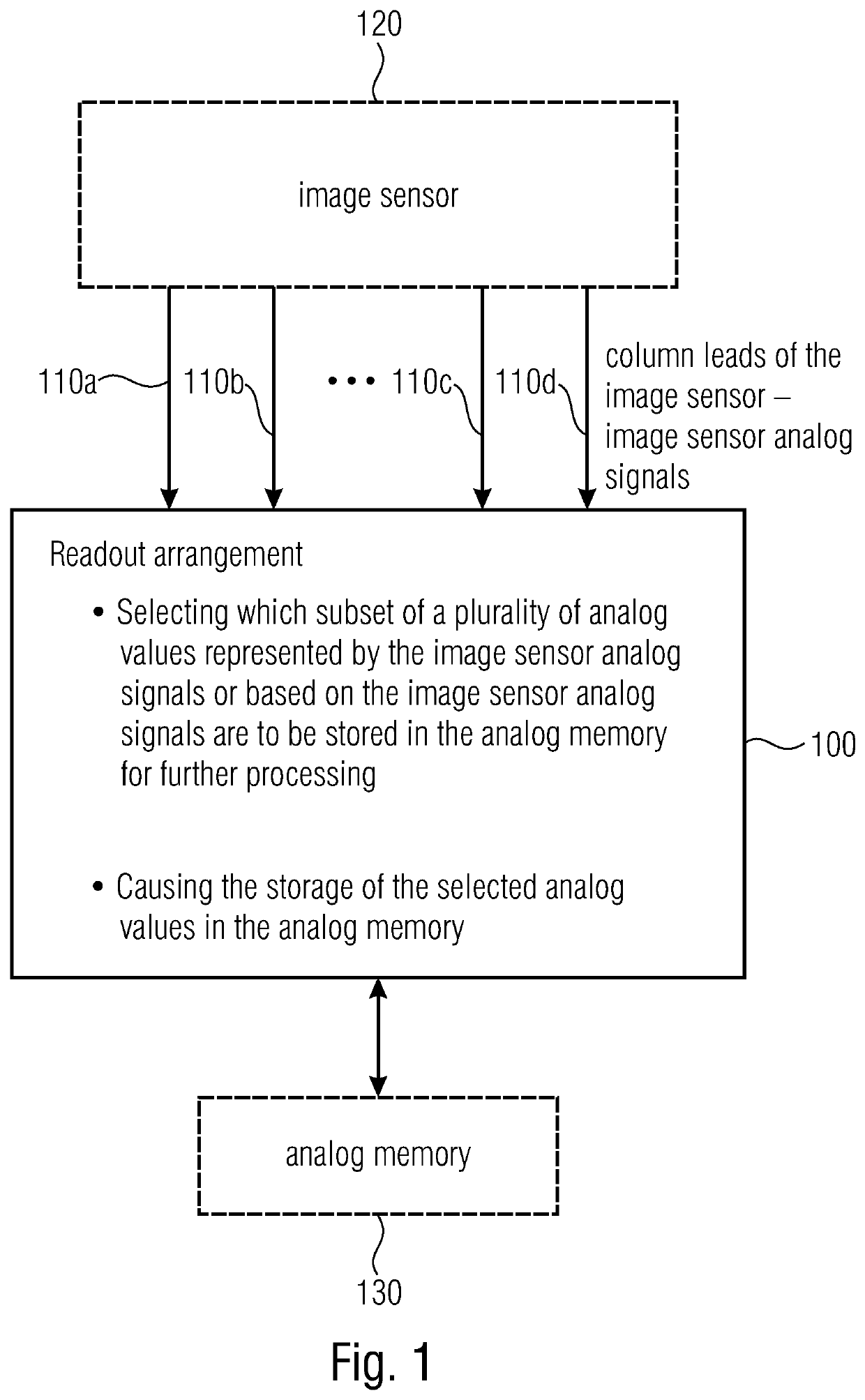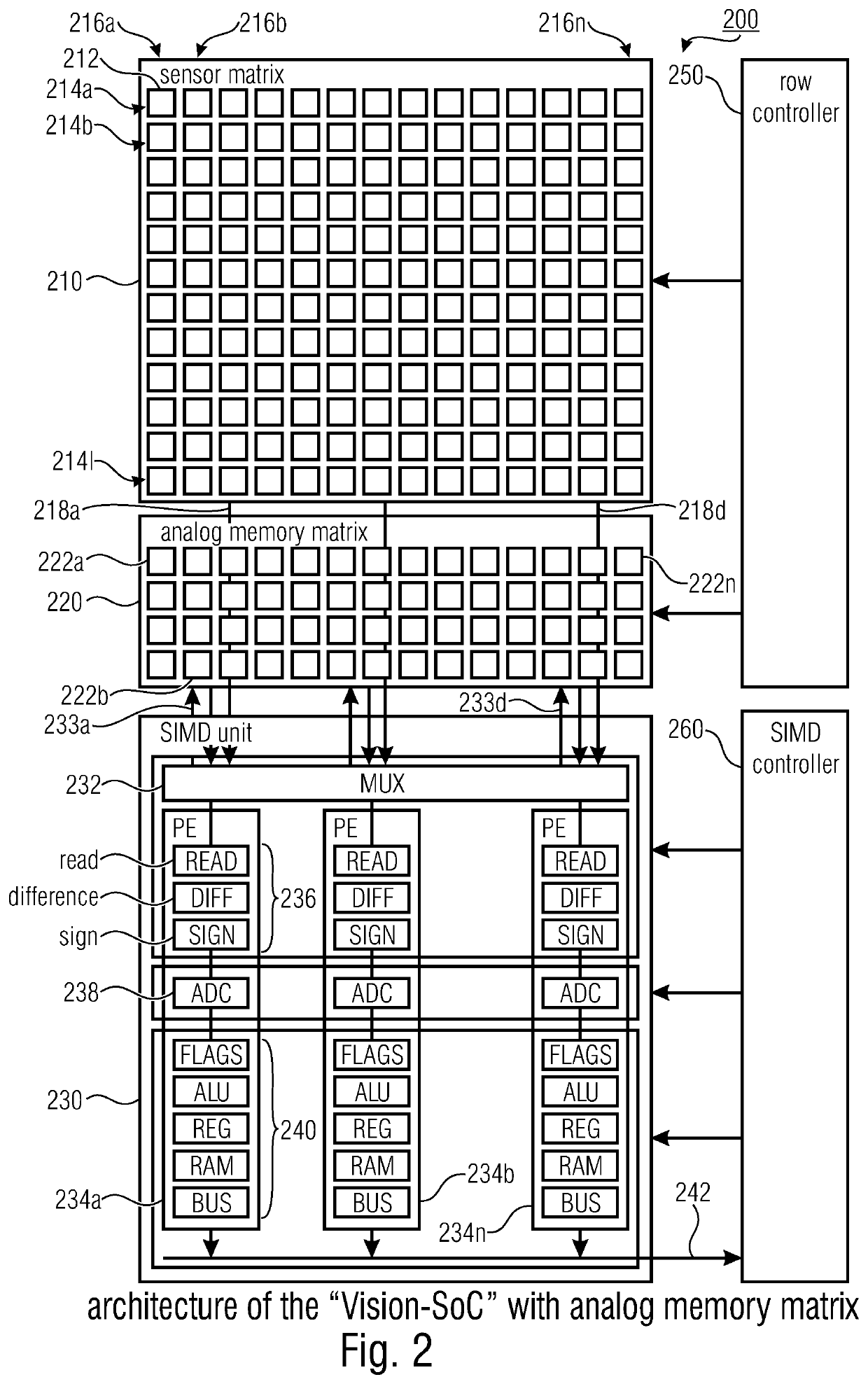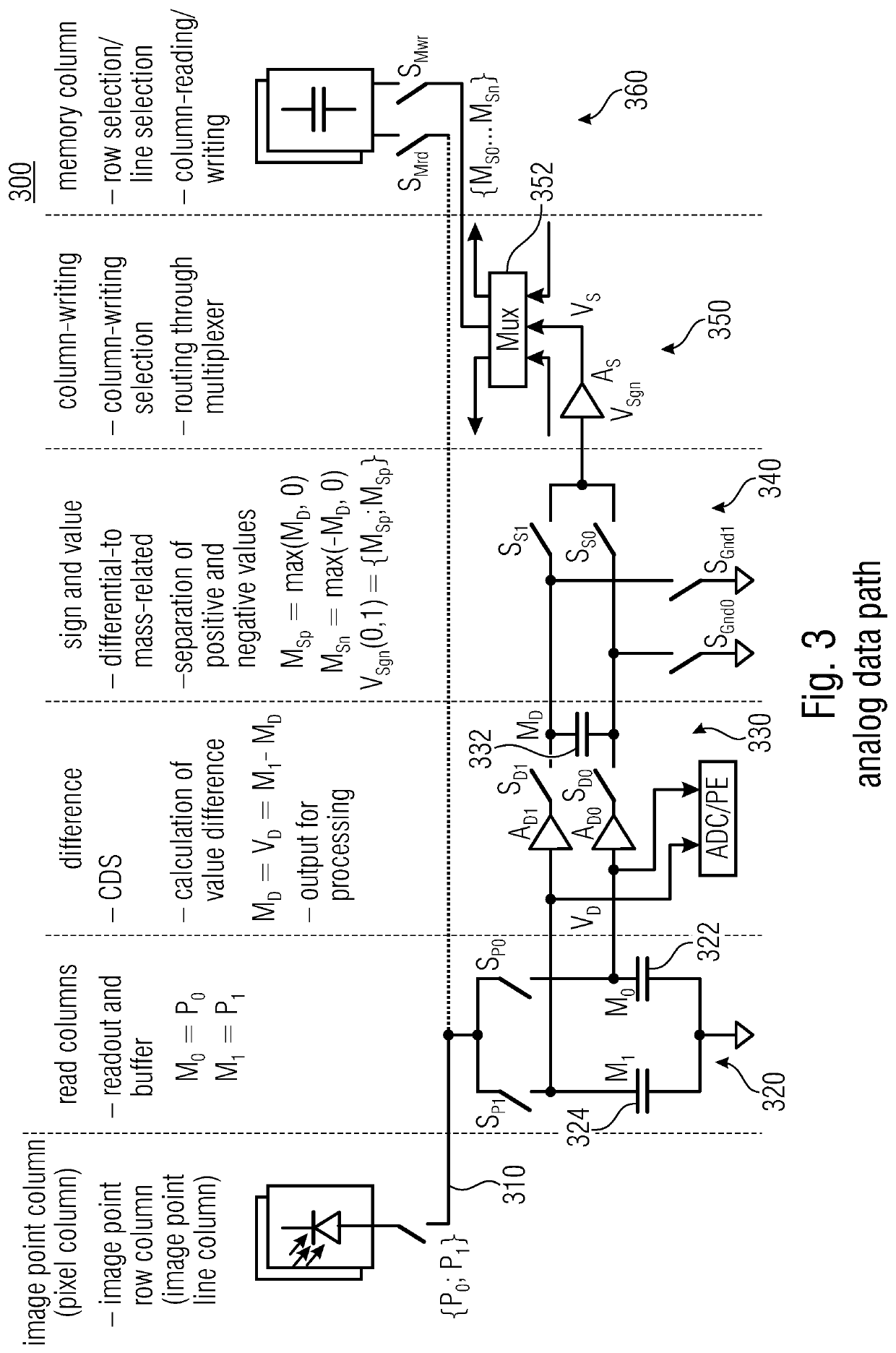Readout arrangement for an image sensor, image sensor system and method for reading out an image sensor
an image sensor and readout technology, applied in the field of readout arrangement for an image sensor, can solve the problems of inability to retrieve, inconvenient readout, and inability to readout, and achieve the effects of convenient readout and further processing, saving memory space, and simplifying readou
- Summary
- Abstract
- Description
- Claims
- Application Information
AI Technical Summary
Benefits of technology
Problems solved by technology
Method used
Image
Examples
application examples
3.3 Further Application Examples
[0172]A possible application example consists in the use, or implementation, of a filter operator. For example, the filter operator may be formed by the readout arrangement 100. Here, for example, the SIMD unit 230, or the analog data path 300, may be used. For example, the filter operation may be performed by analog signal processing, wherein analog values of several image sensor cells may be stored in an analog manner and be combined (for example, in a weighted manner) in an analog manner, for example.
[0173]Output values of such filter operations (i.e., for example, a weighted combination of analog values of several image sensor cells) may also be used for deciding whether analog values are to be stored in the analog memory for further processing or not. However, the output values of the filter operations may also represent the analog values to be stored in the analog memory for further processing.
[0174]Thus, for example, by means of the analog real...
PUM
 Login to View More
Login to View More Abstract
Description
Claims
Application Information
 Login to View More
Login to View More - R&D
- Intellectual Property
- Life Sciences
- Materials
- Tech Scout
- Unparalleled Data Quality
- Higher Quality Content
- 60% Fewer Hallucinations
Browse by: Latest US Patents, China's latest patents, Technical Efficacy Thesaurus, Application Domain, Technology Topic, Popular Technical Reports.
© 2025 PatSnap. All rights reserved.Legal|Privacy policy|Modern Slavery Act Transparency Statement|Sitemap|About US| Contact US: help@patsnap.com



